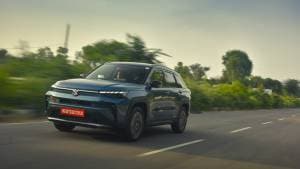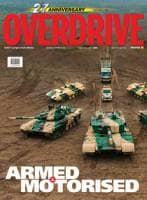If hell freezes over... Snow hunting in the Jeep Wrangler Rubicon, Mercedes-Benz G-Wagon, Land Rover Defender
Climate change isn't real. And that statement is a bald-faced lie. I mean, it doesn't take Holmes-level deductions to see, and feel, that it's getting hot in here. Typically, January in the mountains in this part of the country would have you reaching for your snow boots. Which is exactly what I packed when we planned this story - three off-road icons, two of them bastions of old-school mechanicals, one snow-filled adventure. Simple enough. Except, the weather didn't quite want to play along. It was snowing when it shouldn't have, and was clear as glass when we needed it to be powdery. We've had the warmest January in over a decade, with some places in the country seeing highs that are double what they were ten years back.
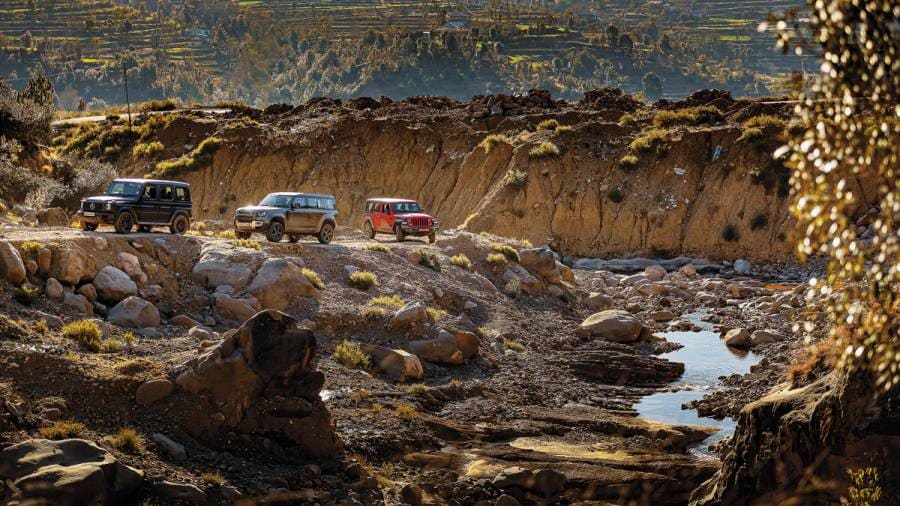
Change is inevitable. Hence proved. Some change takes longer, but it's there alright. The Willys CJ-2A (Civilian Jeep) came out in 1945, and had a low-range transfer case, rigid axles front and rear, round headlights, and a seven-slot grille. The Jeep Wrangler, its successor some eight iterations later, added air conditioning. From YJ, TJ, JK, and finally to JL, the Wrangler's come a long way, with touchscreen infotainment that can, for example, map your off-road exploits via GPS and let you share it with your off-roading buddies so they can come check it out themselves.

The Rubicon is an especially impressive package, adding to the capabilities of the standard Wrangler with its explosive 2.0-litre turbo-petrol, with sway bars that can be disconnected at the push of a button, for one. Imagine that! Proper, hardcore articulation in seconds, versus getting on your hands and knees, and wrenching off the (potentially mucky) end links. But it's still stayed true to its body-on-frame construction, and manual transfer case through the years, despite the added leather upholstery, soft-touch surfaces and everything else nice that make this new JL-generation Jeep so, so, so much better than the previous JK-generation.
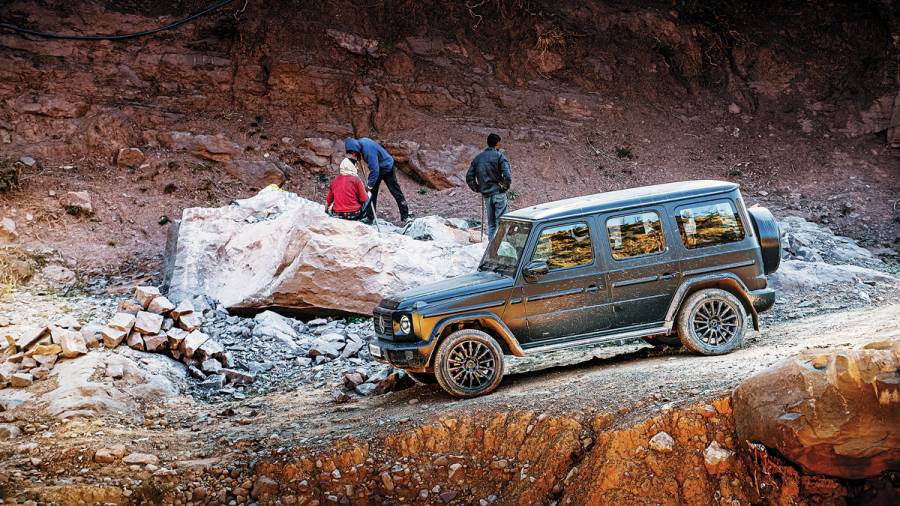
Similarly, the Mercedes-Benz G-Class, or Gelandewagen as it used to be known, has continued in the path set by its forebears from 1979, albeit slowly. It was conceived of as a comfortable cross-country vehicle, at the request of the Shah of Iran, and with the cachet of the three-pointed star on its hood and three lockable differentials, it immediately carved a niche for itself amongst the more mass-market efforts from the likes of Toyota, Jeep and even Land Rover. With a slew of body styles planned, the body-on-frame construction made the most sense to keep the G as uncomplicated as possible. As did the live rear axle. The first-gen W460 only made way for a second in 1990, the W461 with the option of all-time 4WD, and it was only then that a new model line, the W463 was introduced. This is the model that actually added luxury to go with the Mercedes badge. The third-gen G is actually the second-gen W463 and wider and longer than before, the changes make sure its road-holding capabilities match its looks. It's still a brick, with a coefficient of drag of 0.54, but it's a massively well-appointed brick inside, and with an all-new alloy body shell and more on the outside. Despite the modern 3.0-litre inline six diesel and nine-speed auto, it's still very close to its lineage everywhere else. Sure, it's ditched the live front axle for an independent setup, but the rear is still live and kicking, and not always just figuratively.
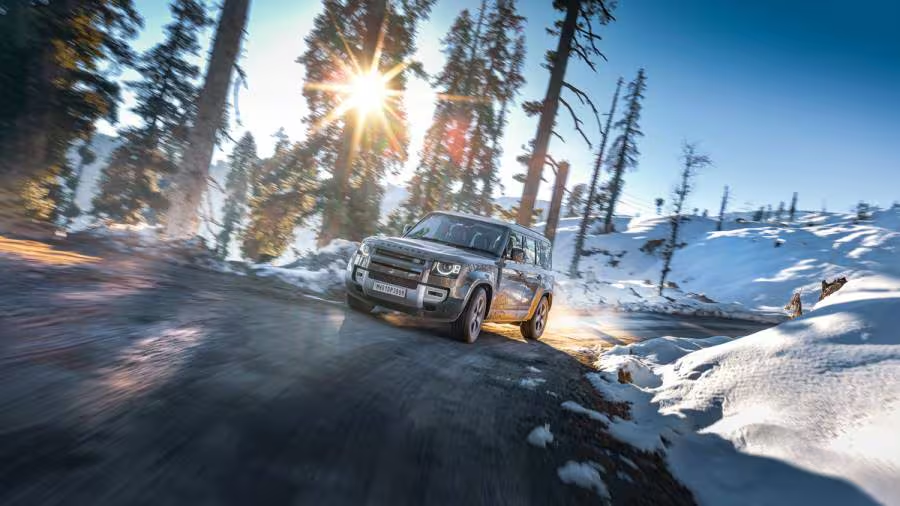
Finally, we get to the throughly modern Defender. It's the SUV that's changed the most, and like the changing climate, angers varied groups of arm chair extremists who try their best to deny its existence. Like the Wrangler, it traces its roots back to the Land Rover Series 1 from 1948, Britain's answer to the Jeep. Like the Wrangler, it split into its own model line in the early '90s but stayed as functional and utilitarian as the original till 2016, when it went off sale. Land Rover was biding its time for the revival project of the century. The L663 Defender has plenty of throwbacks to the original, but embraces the future unashamedly. Body-on-frame? No thank you, the new Defender is a full monocoque, with fully independent multi-link setups front and rear, and air suspension! Not to mention electronically locking differentials, with more clever electronics in the form of an updated Terrain Response 2 system making it the only SUV here to be able to adapt automatically to situations on the go.
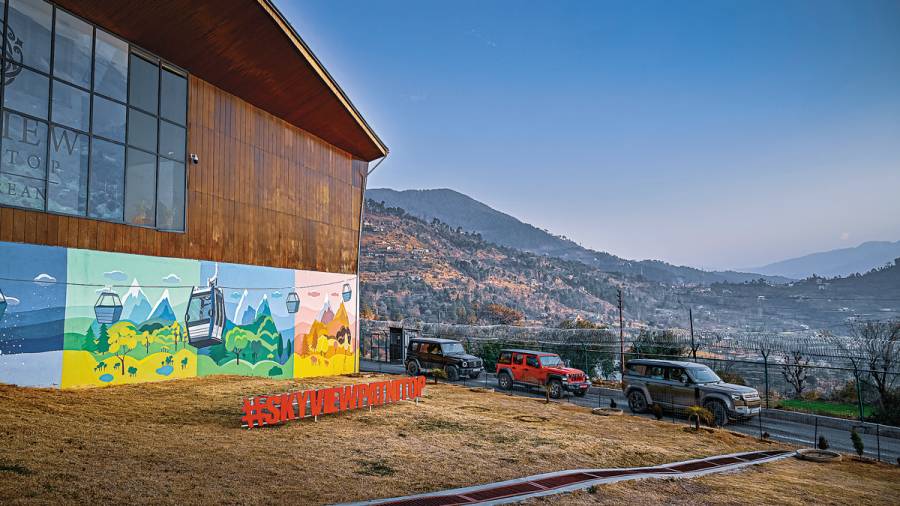 Hospitality partner: Skyview Patnitop
Hospitality partner: Skyview Patnitop
Not that we needed great adaptability in our run up to Jammu, and our destination of Patnitop in the sinking search for snow to throw these SUVs into. On the mostly flat and even tarmac from Chandigarh to Jammu, the G-Wagen I was piloting was a revelation. Though we've only ever experienced the AMG G63 over long distances before, the diesel G350 proved to be as quick from point A-B, and a good sight more efficient - it managed the 500-odd kilometres on less than half of its shockingly large 100-litre tank. It's also surprisingly well-mannered for a 2.3 tonne SUV whose body sits on its chassis. Apart from the slightly firm seats with their aggressive lumbar support which actually ended up doing the opposite, the G makes for a supreme road machine. When the road surface gets a little undulating, your best course of action is to set the drive mode to Sport and firm up the adaptive dampers a tad to even out the ride. Of all the body-on-frame SUVs out there, I'd reckon the G easily outdoes the others with its body control to ride quality performance.
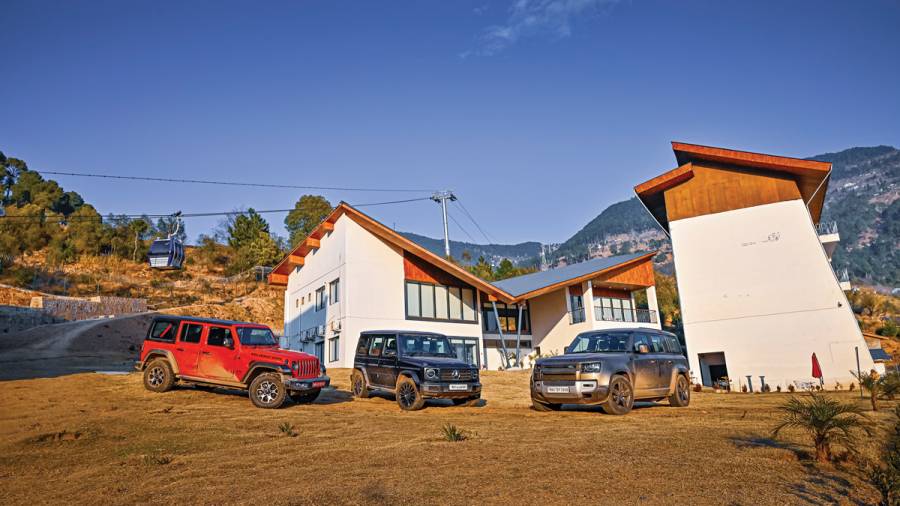 From India's highest ropeway, to India's only zig-zag zip line, a magic carpet ride, grass sledding and accommodation to come, Skyview has something for everyone, and is a must-visit if you're at Patnitop
From India's highest ropeway, to India's only zig-zag zip line, a magic carpet ride, grass sledding and accommodation to come, Skyview has something for everyone, and is a must-visit if you're at Patnitop
 Zig-zag zip lining at Skyview Patnitop
Zig-zag zip lining at Skyview Patnitop
Which is more than I can say about the Wrangler Rubicon, thankfully driven cross-country from Mumbai to Jammu by Rohit over the course of a few days and an inordinate number of tankfuls of petrol. With its aggressive M/T BF Goodrich rubber designed for plowing through mud, the sanitised conditions of tarmac throws it off its game a bit. Rohit was understandably eager to hand over the keys when we all finally met up at our base, Skyview Patnitop, adventure resort and home to India's highest-elevation cable car. We'd seen nothing but dry, browning landscapes coming out of winter on the drive up, but the vantage point up in the air did bring hope off in the distance - glorious peaks covered in snow.
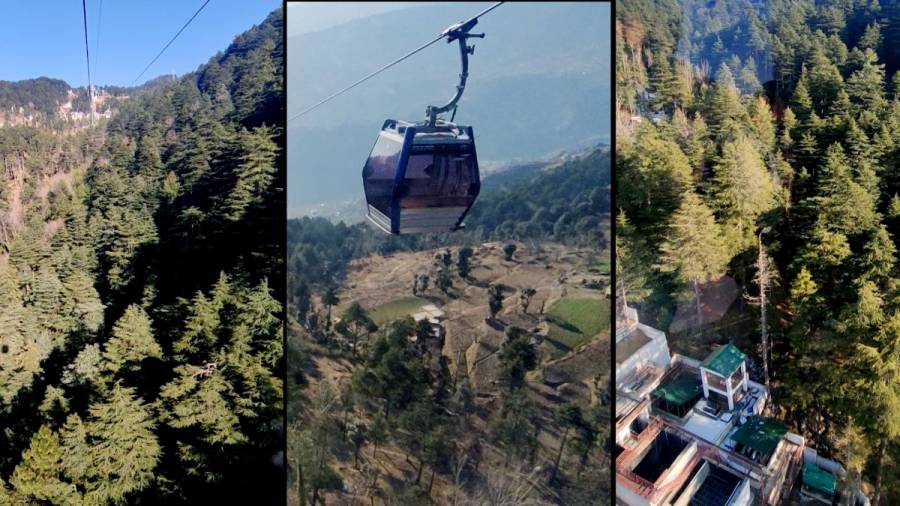 Gondola ride at Skyview Patnitop
Gondola ride at Skyview Patnitop

About an hour's drive from Patnitop proper, Nathatop and the village of Sanasar promised to hold the adventure of mucking about in the snow. Part of the Pir Panjal range of the Himalayas, the area receives heavy enough snowfall in the winter to shed its tourist hot spot image temporarily, but with the last of the already weeks-old snow rapidly melting away under a blazing sun, time was of the essence, as Bert kept reminding us, seeing as how this "winter drive" had been at the mercy of a unseasonably recessive winter.
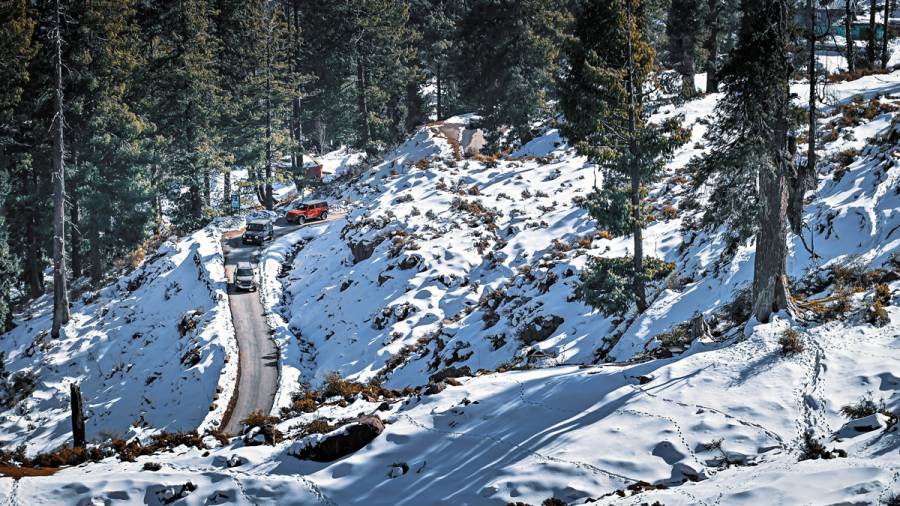
Finally, a sense of occasion befitting the choice of vehicles! The immediate course of action was to find a way up to Nathatop, and sat in the towering seat of the Defender, I felt a lot closer to the peak already. A suitably gnarly off-road trail that would skip the Khud village and its traffic was chosen, and while the Defender does offer a great view out, its thick A-pillars take some getting used to, especially after getting used to the view out of the G, a decidedly more open view at that. Fortunately the 360-degree cameras work a treat, and the stubby gear lever works great as a hand rest when your finger's poised above the screen to switch camera angles to get a better look at that particularly evil-looking rock outcrop coming up.

Another thing you notice climbing out of the G and into the Defender is just how much further you've to climb, unless the Defender is in its access height mode. And though the Terrain Response system does a great job in Auto, dulling throttle response, and the sometimes ultra-sharp brakes, and allowing a little more leeway from the traction control on a rocky incline, you definitely do need to call upon its low range capabilities to be able to crawl at a speed that's comfortable for the heavy-duty stuff. It's a proper chug-along scene then, and puts the Merc's low-range to shame even, which can still prove to be too eager to roll away from the brakes in tricky situations. Which are often made even trickier by the fact that the G doesn't have ANY off-road drive modes to tailor the steering or throttle response.
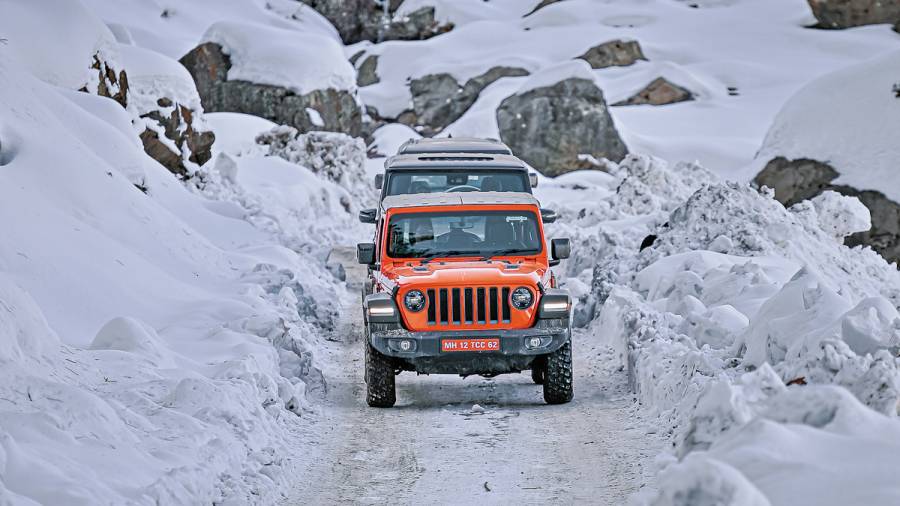
On the other hand, despite no drive modes, the Wrangler Rubicon looked the most comfortable out on the narrow trail. Sure, you have to manually take it out of 2WD and clunk it into 4LO, and then do the procedure in reverse when you get back to tarmac. But when it's all slotted in, it feels invincible. And somehow, you feel less worried about dinging the underbody or the brightwork, despite being a few millimetres under the G's 241mm of clearance. Enough so, that when the trail ran out, with a large rock in the way, you really wouldn't think twice about disconnecting the sway bars and clambering over.
Back on the road now, having lost some more time, the Defender starts to show the cracks in its defence. It's immensely comfortable, glossing over ditches in the road that would toss you up in either of the other two, but that pliancy also means there's more side-to-side movement. It evens out quite magnificently at higher speeds, but on these tight mountain switchbacks, it's a task to get the Defender up to speed with the kind of urgency the Wrangler manages, or the effortlessness of the G with its oceanic reserves of torque. It's a long, long SUV (in wheelbase too), and you can feel that novel third row of seats cross corners a good second after you've turned in.
It's a feeling that would be familiar to anyone who's driven the previous-gen Wrangler, and while this new one can be thrown around with a little more abandon, it's got only marginally less space between the wheels than the Defender, with the added disadvantage of a slightly lazy steering rack - great for the trail, but a chore for a meandering road surface where you'll find yourself sawing at the wheel if you try bombing over a mountain road at speed.
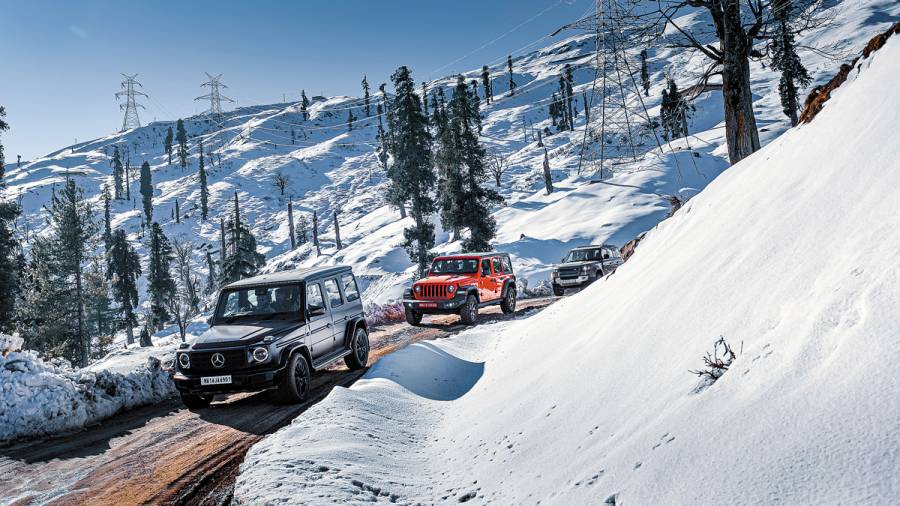
Unsurprisingly, the G-Wagen made it up to Nathatop first, being quite a bit easier to manoeuvre than the other two. We'd made it up just in time to find some snow on the road, and patches of black ice. On all-season tyres, easily the most road-biased of the lot, the G needs some careful piloting, but it's heavy enough to still feel confident over the slick surface. Trailing the Wrangler, I can see it crab its way up in 2WD, the rears spinning up especially on inclines where momentum is lost. Not so ideal now, eh? Especially when you consider that while it is possible to shift to 4LO on the fly, it'll take a deft hand to do so. Or just a bit of foresight on the driver's part.
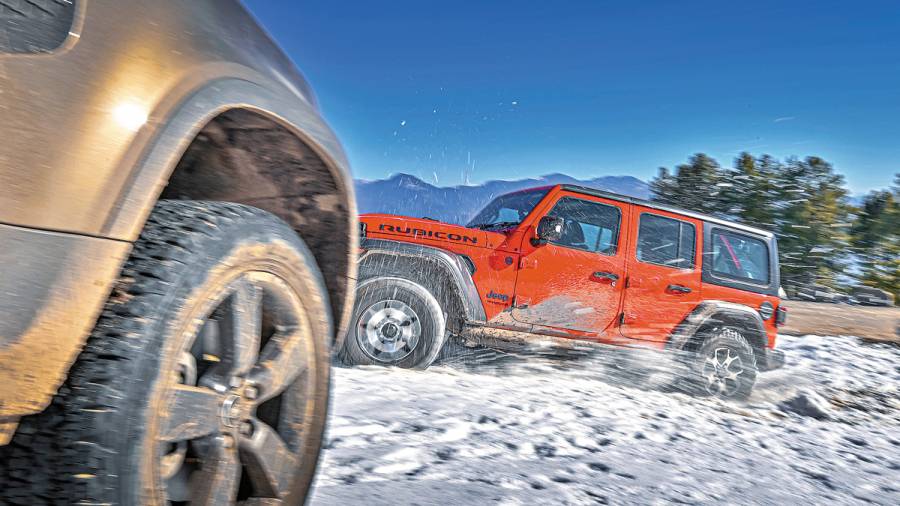
Fortunately, the ultra-modern Defender needs no such planning. Set in automatic, the Landie's brain is measuring things like angle of incline, wheel slip, throttle position, suspension compression and more up to 500 times a second to set itself up to make smooth progress. It just leaves you with more time to take it all in. When we finally reach a suitably snowy patch, we can just pull off the road and set up for a shot. And surprise, surprise, it's the heaviest car here (on a monocoque, no less) that makes it up with the least fuss, the Defender. Despite the lack of outright low-end grunt, it doesn't actually break a sweat, while the Wrangler's screaming its heart out, its aggressive tyres digging it in instead of helping it out.
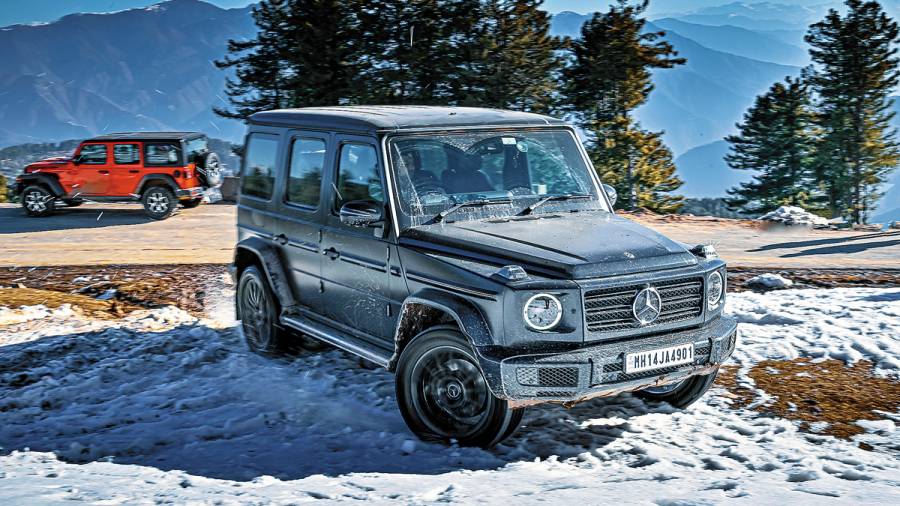
The G? Considering the snow had melted into ice, and was more slippery than if it was fresh powder, it did really well on its road tyres, getting about halfway up what the other two managed. And while hell freezing over may seem less impossible now, these three seem more than ready for anything the post-apocalypse can bring.
Photography by Anis Shaikh
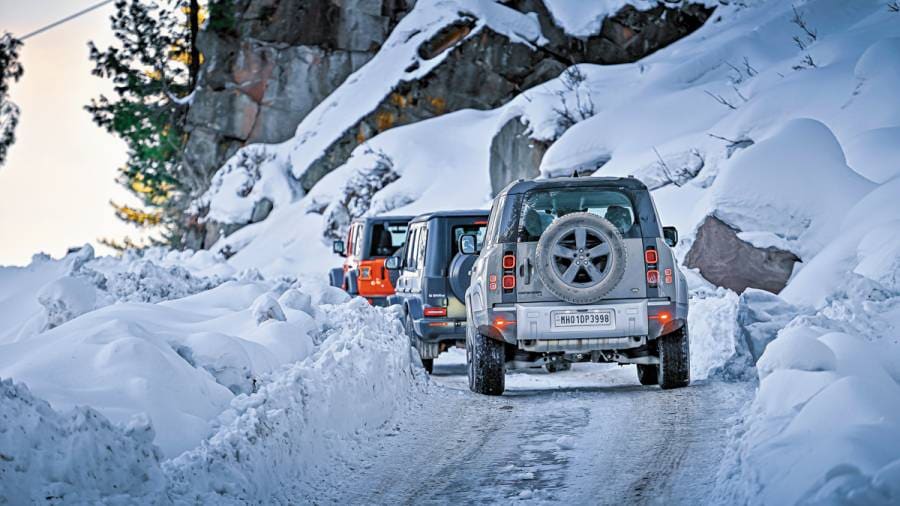
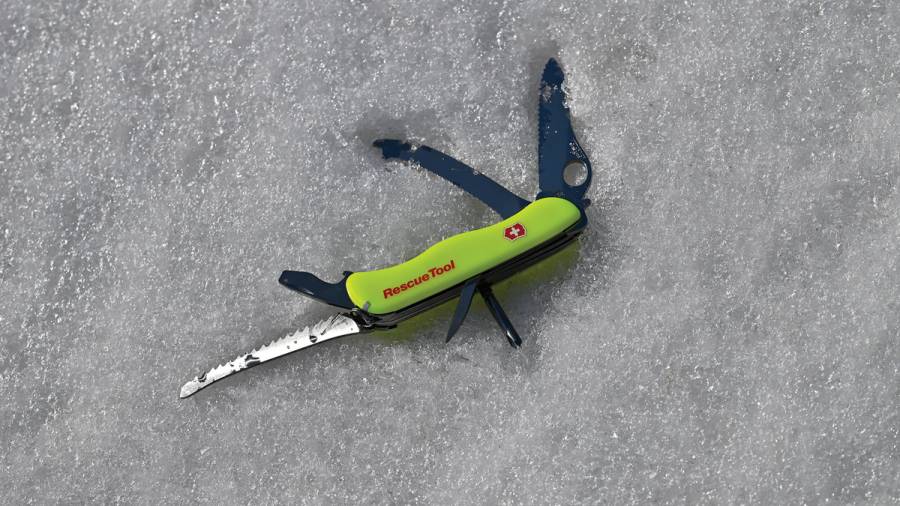 Our Safety Partner, Victorinox, sent across the Rescue Tool, an invaluable partner for any adventure. Packing a window breaker, saw and seatbelt cutter, it can make all the difference in a tight situation. Luckily for us, we didn't need to use it, but the extra peace of mind was good to have
Our Safety Partner, Victorinox, sent across the Rescue Tool, an invaluable partner for any adventure. Packing a window breaker, saw and seatbelt cutter, it can make all the difference in a tight situation. Luckily for us, we didn't need to use it, but the extra peace of mind was good to have
Watch the video of the epic journey here:
Camera partner (video): Panasonic
Starts Rs 73.98 Lakhs
2996cc
Automatic
300
650
-NA-
Starts Rs 53.9 Lakhs
1995cc
Automatic
268
400
-NA-
Starts Rs 1.5 Crore
2925cc
Automatic
286
600
-NA-

